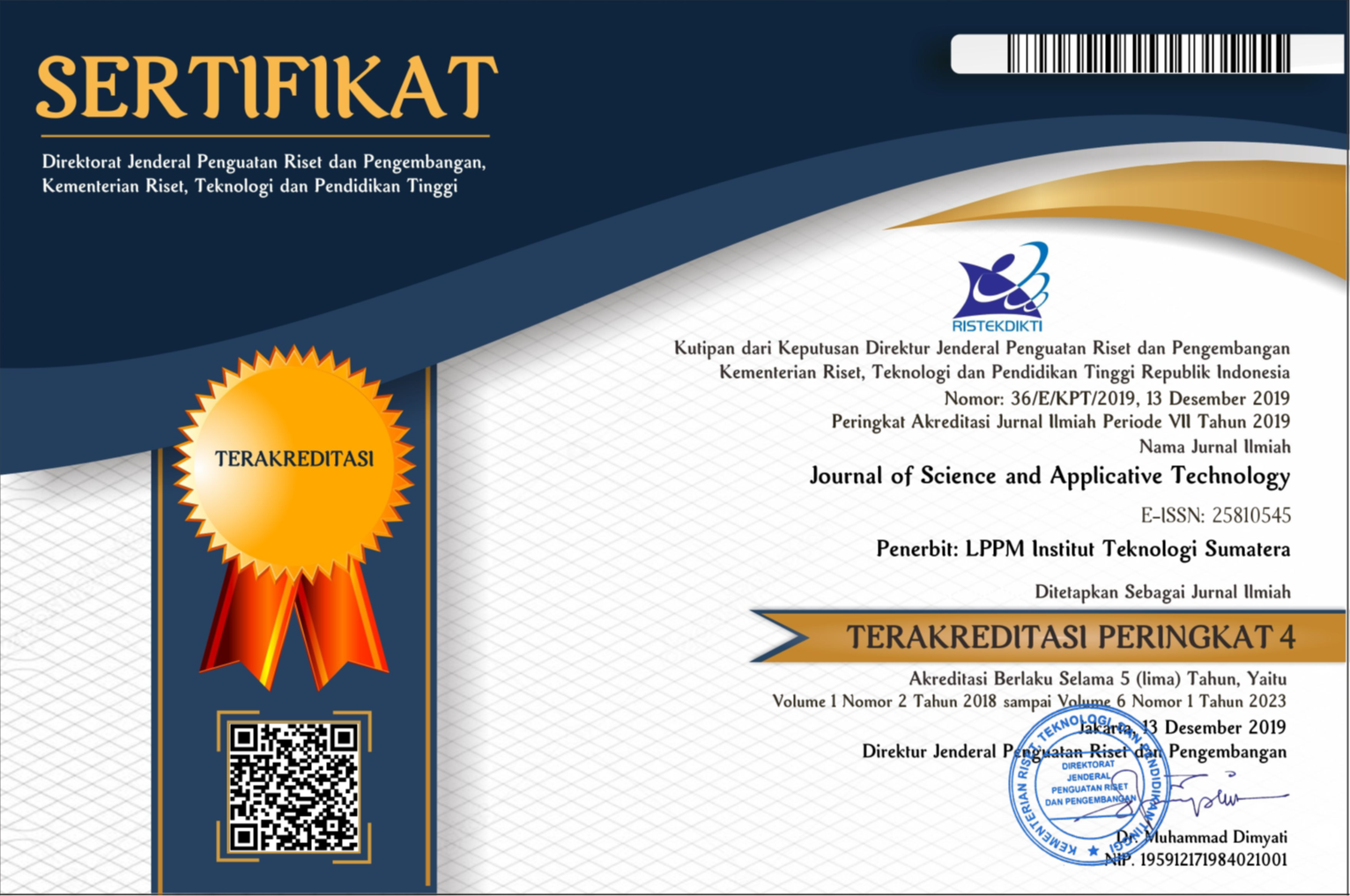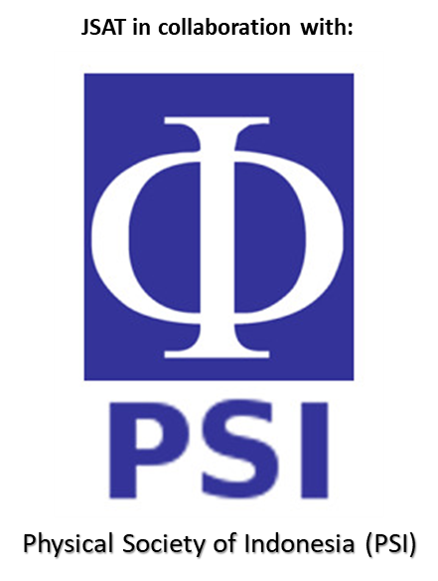Young Adult Perception of Fermented Durian (Tempoyak) in Lampung Province, Indonesia
Abstract
Tempoyak is fermented food made from durian (Durio zibethinus) pulp. This product is popular traditional food in Indonesia and Malaysia. To ensure the current position of tempoyak and its dishes in young generation, this research was conducted to obtain young adult perception about tempoyak as traditional food in Lampung, and also discover about its potential for innovation. Method for investigate the response of young adults to tempoyak as traditional food was using direct questionnaire survey through google form. A total of 115 respondents have participated in the survey, consisted of 43 men and 72 women. The result showed that all of the respondent were familiar with tempoyak, but only three-quarter of them had ever taste of its products. Half of the respondent were preferred intermediate acidity level of tempoyak, and the rest of them preferred tempoyak with low acidity level and sweet taste. More than 95% of respondents agreed that tempoyak needs innovation to be better known in public. The innovation needed were product form (55%), packaging innovation (21%), instant product innovation (18%), others (5%), and marketing strategy (1%).
Downloads
References
[2] J. J. Leisner, M. Vancanneyt, G. Rusul, B. Pot, K. Lefebvre, A. Fresi and L. K. Tee, “Identification of lactic acid bacteria constuting the predominating microflora in an acid-fermented condiment (tempoyak) popular in Malaysia,†International Journal of Food Microbiology, vol. 63, no. 1-2, pp. 19-157, 2001.
[3] I. Gandjar, “Fermentations of the Far East,†in Encyclopedia of Food Microbiology, London, Academic Press, 2000.
[4] A. Haruminori, N. Angelia and A. Purwaningtyas, “Makanan etnik melayu: tempoyak,†Jurnal antropologi: Isu-Isu Sosial Budaya., vol. 19, no. 2, pp. 125-128, 2017.
[5] Y. V. Rajagukguk and M. Arnold, “Tempoyak: Fermented durian paste of Malay ethnic and its functional properties,†International Journal of Gastronomy and Food Science, vol. 23, no. 100297, 2021.
[6] Y. R, Rosida and N. M, “Fermentation Process Evaluationo on Tempoyak Quality,†J. REKAPANGAN , vol. 8, no. 1, pp. 84-103, 2014.
[7] N. Yuliana, “Pengolahan durian (Durio zibethinus) fermentasi (tempoyak),†Jurnal Teknologi & Industri Hasil Pertanian, vol. 12, no. 2, pp. 74-80, 2012.
[8] J. D. Owens, Fermented Foods and Beverages Series: Indigenous Fermented Foods of Southest Asia, Boca Raton: CRC Press, 2015.
[9] M. Amiza, J. Zakiah, L. Ng and K. Lai, “Fermentation of tempoyak using isolated tempoyak culture,†Research Journal of Microbiology, vol. 1, p. 243–254, 2006.
[10] S. Ketsa and T. Daengkanit, “Physiological changes during postharvest ripening of durian fruit (Durio zibethinus Murray),†Journal of Horticultural Science and Biotechnology, vol. 73, no. 5, p. 575–577, 1998.
[11] Z. Merica, “Malaysian Tempoyak,†in Handbook of Indigenous Fermented Foods, New York, Marcell Dekker, 1997.
[12] X. Gellynck, B. Vermeire and J. Viaene, “Innovation in food firms: Contribution of regional networks within the international business context,†Entrepreneurship & Regional Development, vol. 19, no. 3, pp. 209-226, 2007.
[13] B. Lundvall, National systems of innovation: towards a theory of innovation and interactive learning, London: Biddles Ltd, 1995.
[14] E. Harmayani, M. Gardjito and U. Santoso, Makanan tradisional Indonesia seri kelompok fermentasi dan makanan yang populer di masyarakat, Yogyakarta: Gadjah Mada University Press, 2017.
[15] H. Pangastuti, L. Permana, D. Mareta, V. Fitriani and A. Wahyuningtyas, “Kajian sifat fisik, kimia, dan sensoris sambal tempoyak (durian terfermentasi) berkemasan retort pouch,†Jurnal Teknologi Pertanian Andalas, vol. 24, no. 2, pp. 157-165, 2020.
[16] M. Amin, J. Zakiah and K. Ng, “Effect of salt on tempoyak fermentation and sensory evaluation,†J. Biol. Sci, vol. 4, pp. 650-653, 2004.
[17] R. Wasnin, M. Karim and H. Ghazali, “Effect of temperature-controlled fermentation on physico-chemical properties and lactic acid bacterial count of durian (Durio zibethinus murr.) pulp,†Journal of Food Science and Technology, vol. 51, pp. 2977-2989, 2012.
[18] E. Khalil, M. Manap, S. Mustafa, A. Alhelli and P. Shokryazdan, “Probiotic Properties od Exopolysaccharide-Producing Lactobacillus Strains Isolated from Tempoyak,†Molecules, vol. 23, pp. 397-418, 2018.
[19] A. Drewnowski, “Sensory preferences for fat and sugar in adolescence and adult life,†in Nutrition and the chemical senses in aging: Recent advances and current research needs, New York, The New York Academy of Sciences, 1989.
[20] L. Guerrero, A. Claret, W. Verbeke, C. Sulmont-Rossé and M. Hersleth, “nnovation in traditional food products: does it make sense?,†in Innovation Strategies in the Food Industry (, Academic Press, 2016..
[21] X. Gellynck and B. Kühne, “Innovation and collaboration in traditional foodchain networks,†Journal on Chain and Network Science, vol. 8, no. 2, pp. 121-129, 20008.
Copyright (c) 2021 Journal of Science and Applicative Technology

This work is licensed under a Creative Commons Attribution-NonCommercial 4.0 International License.
All the content on Journal of Science and Applicative Technology (JSAT) may be used under the terms of the Creative Commons Attribution-NonCommercial 4.0 International License.
You are free to:
- Share - copy and redistribute the material in any medium or format
- Adapt - remix, transform, and build upon the material
Under the following terms:
- Attribution - You must give appropriate credit, provide a link to the license, and indicate if changes were made. You may do so in any reasonable manner, but not in any way that suggests the licensor endorses you or your use.
- NonCommercial - You may not use the material for commercial purposes.
- No additional restrictions - You may not apply legal terms or technological measures that legally restrict others from doing anything the license permits.





















